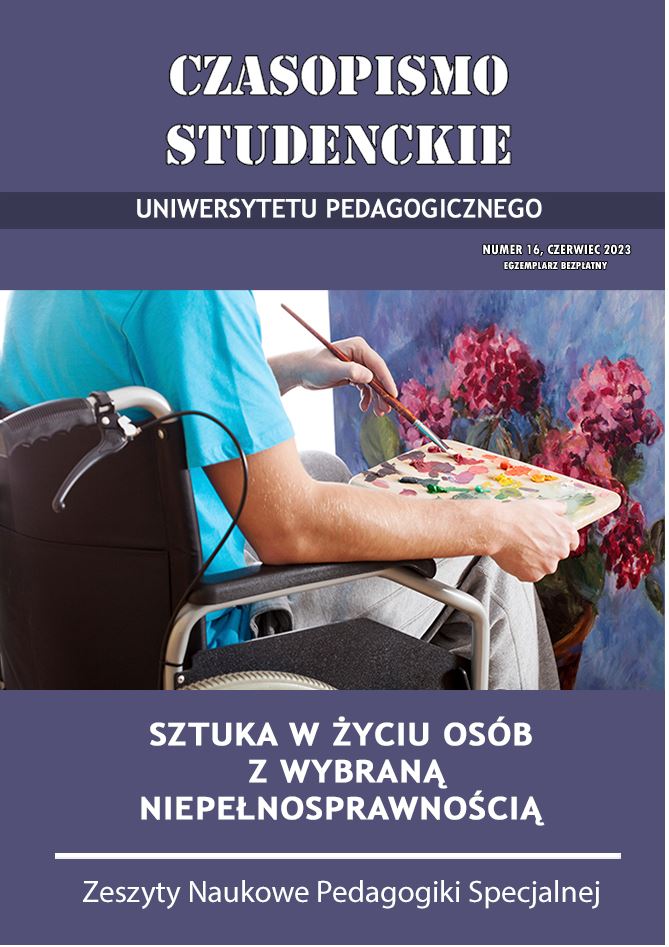Abstract
Art for the visually impaired is an increasingly important element of cultural life. Adapting the form and presentation of works of art to the needs of people with disabilities allows them to participate in the process of creating and receiving art, which certainly affects the quality of their lives.
References
Fine, M., & Asch, A. (Eds.). (1983). Women with disabilities: Essays in psychology, culture, and politics. Temple University Press.
Krieger, S. (1996). The Poetry of Blindness: A Personal Journey. University of Michigan Press.
Łyczewska, M. (2014). Wpływ muzyki na rozwój emocjonalny dzieci z wadami wzroku. Wydawnictwo Naukowe Uniwersytetu Szczecińskiego.
Smith J., Johnson A., Brown C., The impact of Art. On the Emotional Well-being and Social Integration of Indyviduals with Visual Impairments, Journal of Disability Studies, 10(3), 2022, s. 45-60.
Wasiljewa, Ż. (2019). Sztuka dla niewidomych i słabowidzących: Problemy i perspektywy. Wydawnictwo Naukowe PWN.
Netografia
Kennedy, J. (2016). The benefits of art for visually impaired people. CultureHive. https://www.culturehive.co.uk/resources/the-benefits-of-art-for-visually-impaired-people/, data dostępu: 21.04.2023,
Museum of Modern Art. (2021). Art and accessibility. https://www.moma.org/accessibility/ data dostępu: 21.04.2023,
National Endowment for the Arts. (2021). Arts and aging: Creative aging. https://www.arts.gov/artistic-fields/creative-aging, data dostępu: 21.04.2023,
Rousseau, H. (1983). Disabled, female, and proud: A critical analysis of the personal and political uses of the personal tragedy discourse. In M. Fine & A. Asch (Eds.), Women with disabilities: Essays in psychology, culture, and politics (pp. 36-46). Temple University Press. https://www.arts.gov/artistic-fields/creative-aging, data dostępu: 21.04.2023,
United Nations. (2006). Convention on the Rights of Persons with Disabilities. https://www.un.org/development/desa/disabilities/convention-on-the-rights-of-persons-with-disabilities.html, data dostępu: 21.04.2023,

This work is licensed under a Creative Commons Attribution-ShareAlike 4.0 International License.

